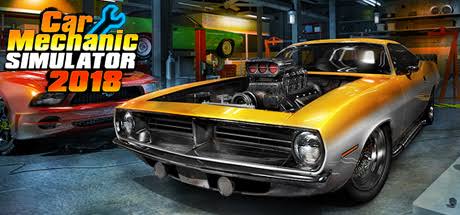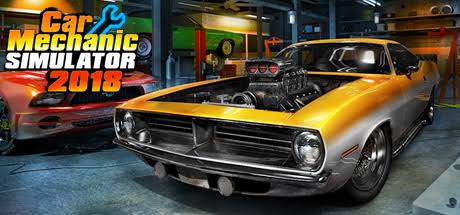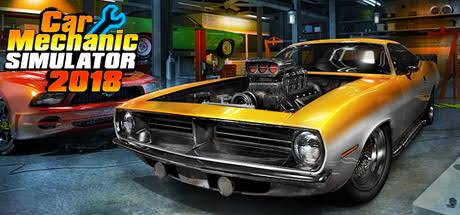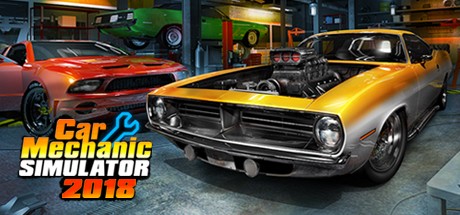Car Mechanic Simulator 2018 – Crossmembers and Suspensions

Crossmember is a support item, whether it is a cross member for transmission, or something else. For the game, it is the subframes and or engine cradles found on uni-body cars. They are known here as Crossmembers. The Crossmembers whether front or back uses four bushings each. Many complain of not being able to find the bushing, try looking here. Because there is no real reason to not find it, it’s like reliving that old, “can’t find the fuel filter or fuel pump” in the 2014 game, where there be this huge list of the same complaint. Let’s not be lazy here…
When they go bad they usually just rust, unless the driver hit the cross member on something like a high parking block, or it got cracked because the bushings are bad. One key factor that they are bad is a knocking noise coming from the floor when going over bumps can sound like it is coming from the engine compartment, or outside the car, uni-body cars will feel a shift in the body when turning, it will be more noticeable in the rear. If the bushing is real bad the cross member will tweek against the body, there is a risk of cracking the body due to metal fatigue.
Bushings. You have bushings that go bad. Bushings are tight-fitted to allow limited slip of movement under pressure. They eventually become loose and the rubber becomes dry rotted and brittle and began cracking. This will cause what is known as “play” This is where the object it is set to cushion, restrict or buffer, now starts shifting, moving, and banging against another object. This will result in possible increased tire wear, alignment problems, and may affect steering and handling in the front, pending what is using bushings. And may cause handling issues in the rear or what is called “dog trailing” in the rear. Could cause the cross member to shift or hit up against the body of the car.
(*HINT knocking noise from engine compartment*)
*What is dog trailing? Ever see that car driving down the road crooked and struggling to be straight in the lane? That’s it.
*Tip, people have complained about “can’t find a bushing” Look for it, it is found on any part that either moves or buffers. Simple…
Shocks. Shocks also have bushing that is factory mounted, their bushings will have the same result as the bushing statement, they would be loose and shifting/knocking about. However, the event is very rare. Shocks are filled with oil that channels through internal valves. This way when the tire receives an impact, this impact is eased through the whole suspension. It is best to lose a tire than destroy the suspension. When shock absorbers go bad, aggressive impacts to the tire are now stricken through the chassis just the same. When they fail the oil is free flowing from one chamber to another. Others have leaky seals, so it is leaking out shock oil and pulling in the air with every bounce. Other reasons for going bad are miles/hours, constant bad roads, potholes, bottoming out.
I am sure you have seen cars with shocks that should be replaced. They go over a bumpy section of road and instead of the tire just bounce and quit, they dribble like a basketball super fast, and when they reach a good section of road, the tire stops, but the car body is still bouncing along, little by little to a stop. The dribble action is a violent hit to the tire. This will result in possible broken belts in the tire, or uneven tire wear, including suspension damage.
Steering rack. It has an internal gear system that gets worn. They wear out due to the stress of road conditions of turning right to left and the suspension system hitting bumps. Increased wear can begin to have more what is called “Free play”. Slight free play is ok, but excessive free play is altogether different.
The more free play, the more every bump forces the steering from the tires to shift right or left harder, the more the gears beat themselves up. More the steering becomes sloppy and uncontrollable. They go bad due to mileage time, shock strikes to the suspension system from bad roads and potholes, an aggressive hit to the wheels. This will result in possible excessive tire wear and bad steering.
Sway Bars, some of these cars use two, one front and one rear. They all use end links. They provide counterforce during cornering for better handling. When they go bad…I guess rust out from age or an impact collision to that side. I never really came across a bad sway bar.
End links. To prevent hard tipping over body roll like that of the cars from the 1950s to the ’60s ( The origin coin term “rides like a boat” ) Anti-sway bars are used on cars today to maintain control while turning, which increase better handling, even going straight.
To do this the bar is attached to the undercarriage and END LINKS are attached to the bar and the suspension arm. So it is stabilized in the center and counter-acting force against the suspension arm. In the game case the shock abs. End links go bad they have played because this is a pivoting part. More play more lost stability. End links go bad from mileage/hours, an aggressive hit to the wheels This will result in possible increased body roll/tilt in cornering and may cause the vehicle to sway down the road. It will create un-even tire wear and annoying cornering in turns..
Upper and Lower suspension arms. Ball joints in the upper and lower suspension arm may have not been greased or is a none greaseable joint, so now the grease it had from the factory is now depleted as dirt. Or maybe it uses a polyurethane style type bushing to make it greaseless and it’s worn out, or age, bad roads, potholes, bottoming out the car. All these cool results will cause the joint socket to wear out of round. This cause again play.
Since they are under enough pressure that if inflicted on a man could kill him, They tend to bind and pop aggressively and come apart. You may have seen this once, a car on the side of the road with a wheel on a steep vertical angle in the fender well from the lower ball joint failing, or cars that use upper control arms the wheel goes almost flat face down vertical out of the fender well, or low ball joints on cars with shocks abs will be hanging towards the back of the fender well looking like it was dragging with body damage from it. So for If the lower suspension arms are bad in the front, this will result in possible steering issues and increased tire wear. Aggressive popping and squeak (*HINT Noise from under the Hood*)
For the rear suspension arms, this will result in an increase in tire wear, alignment issue,
Suspension Springs. If they become worn, the car sits lower, causing The upper body of the car to hit the frame bottom out catch bushing. some springs that are worn somehow shift in their position and are no longer sitting right. Leaf springs will flatten out. They go bad mainly because of age, and possible constant repeating of bottoming out the car.
This will result in possible stiff riding conditions, damage to the lower suspension arms, tire damage, and if bushings are involved can become loose.
Inner tie rods. Inner tie rod ends snap into the steering rack and also have a ball joint system. The beating of the steering rack and suspension system can cause them to go bad, the ball joint fails due to mileage time, a shock strikes the suspension system from bad roads and potholes, an aggressive hit to the wheels. This will result in possible effect steering and excessive tire wear, and cause the vehicle to pull to one side.
Outer tie rods. Outer tie rods are connected to the inner tie rods. The beating of the steering rack and suspension system can cause them to go bad, or the ball joint fails due to mileage time, a shock strikes the suspension system from bad roads and potholes, an aggressive hit to the wheels. This will result in possible effect steering and excessive tire wear, and cause the vehicle to pull to one side.
*Why 2 tie rods for each side? Alignment reasons. Both tie rods are joined together by an adjustable sleeve. When this sleeve is turned, it changes the tire’s angle by being toe in or toe out ( look at your feet, turn your feet so your toes angle out and then in, the same thing ). When doing an alignment job you have to set the correct degree of toe angle. Too much and the car will be squealing its tires loud enough to hear it a block away.
*The correct angle will make the car run straight without holding on to the steering wheel for a bit. The wrong angle and the car will pull to one side off the back or quickly once you let the wheel go. Each different car has its own specs on alignment degrees for toe in or out. It’s an easy job, just turn the sleeve until it is at the correct angle and tighten up the sleeve, and you’re done.
*Since front-wheel drive cars use a drive train in the front, it would be harder to tell if an alignment job is needed due to pulling, since if one wheel is rolling faster than the other, because of road conditions due to weather or dirt. The faster-moving tire will tend to force a pull. But since alignment is not part of the game, this is just personal knowledge and understanding of why 2 tie rods.
Tires. Bad tires make handling the car difficult. Old worn tires will not perform well in weather conditions due to lack of traction. They may cause sliding in rain and snow, because of worn tire treads, water rotted tires have bad traction even with tread. Because They are stiff, feel glazed, have all sorts of cracks on it from the tread line to the sidewall. When they heat up they risk the ability for a sudden surprise blow out on the highway.
Bad or worn tires are the result possible of age, mileage, hot-dogging driving, suspension system issues, steering system issues, potholes, bad road roads, unknown object penetration in a location on the tire making a repair impossible, over and under-inflation. Bad tires will cause bad fuel mileage.
>Wheel Hub, these are used on the game cars but are also on the real ones two, most common on front-drive cars. It uses a bearing on the inside. and the tire is attached to it. However as simple as it is, they too also go bad. When they are you can kind of hear a whining noise coming from the location someplace as well as even in the car. They mostly go bad by Mileage/hours, abuse…







